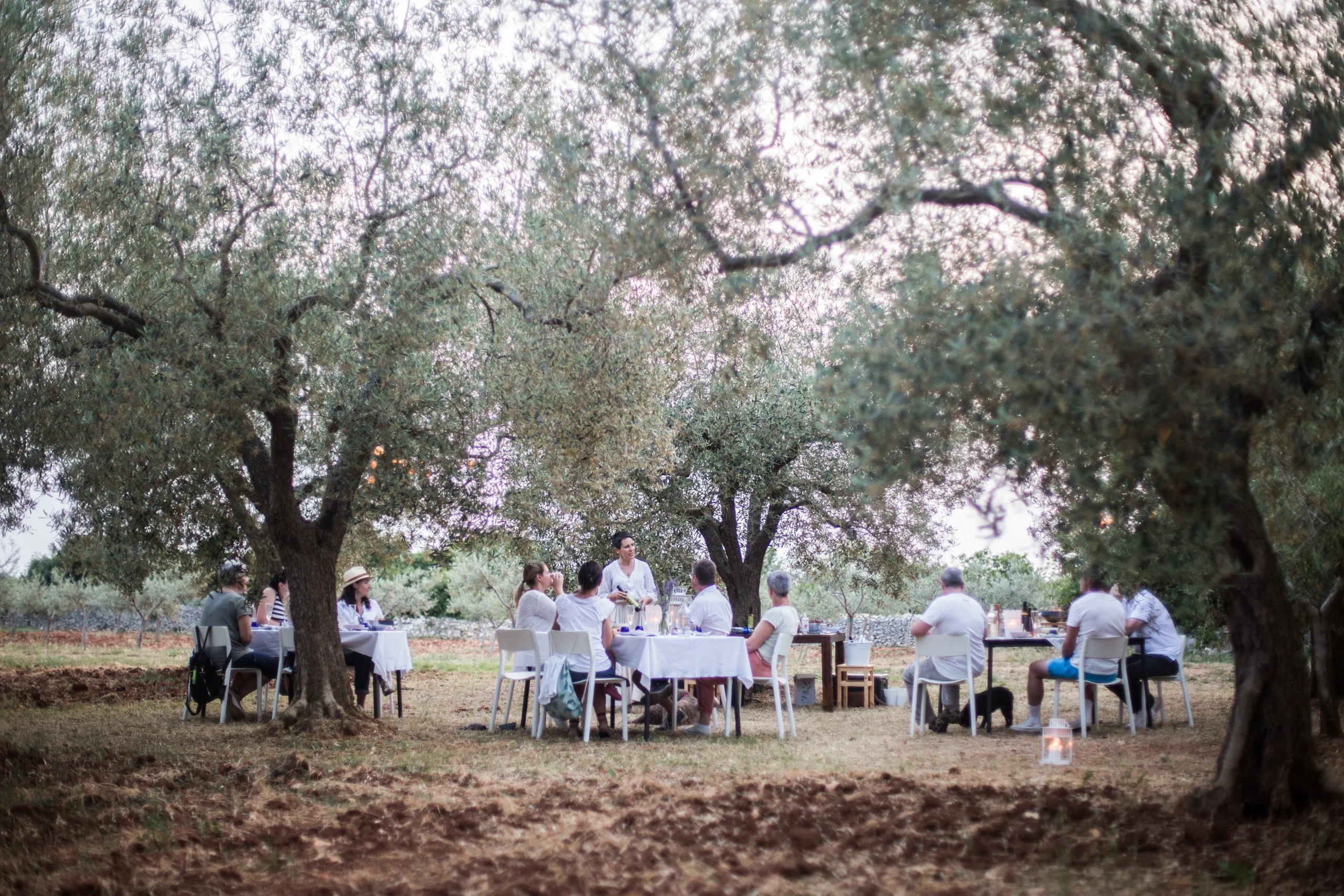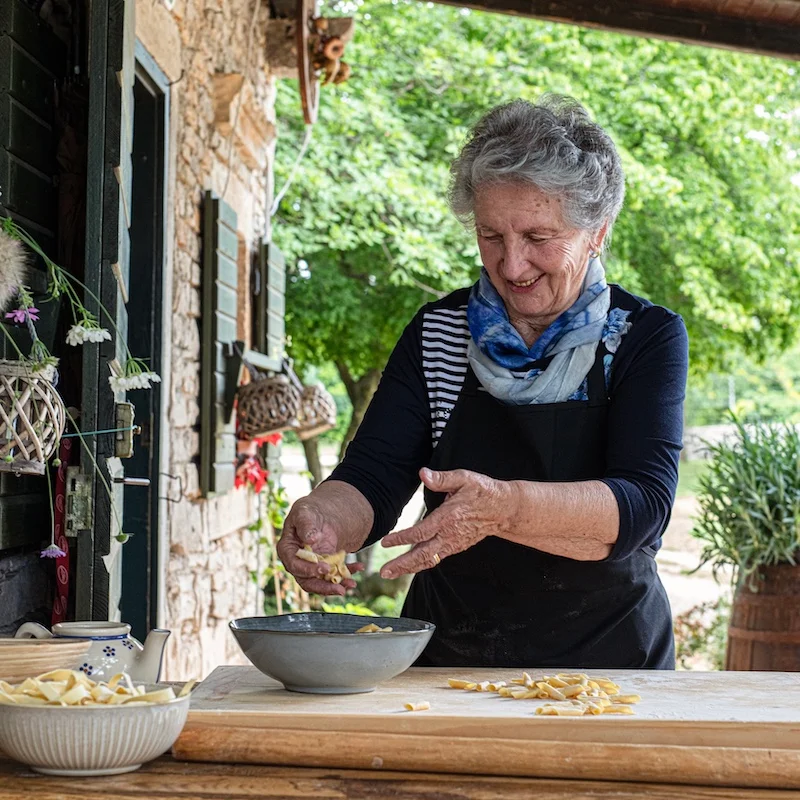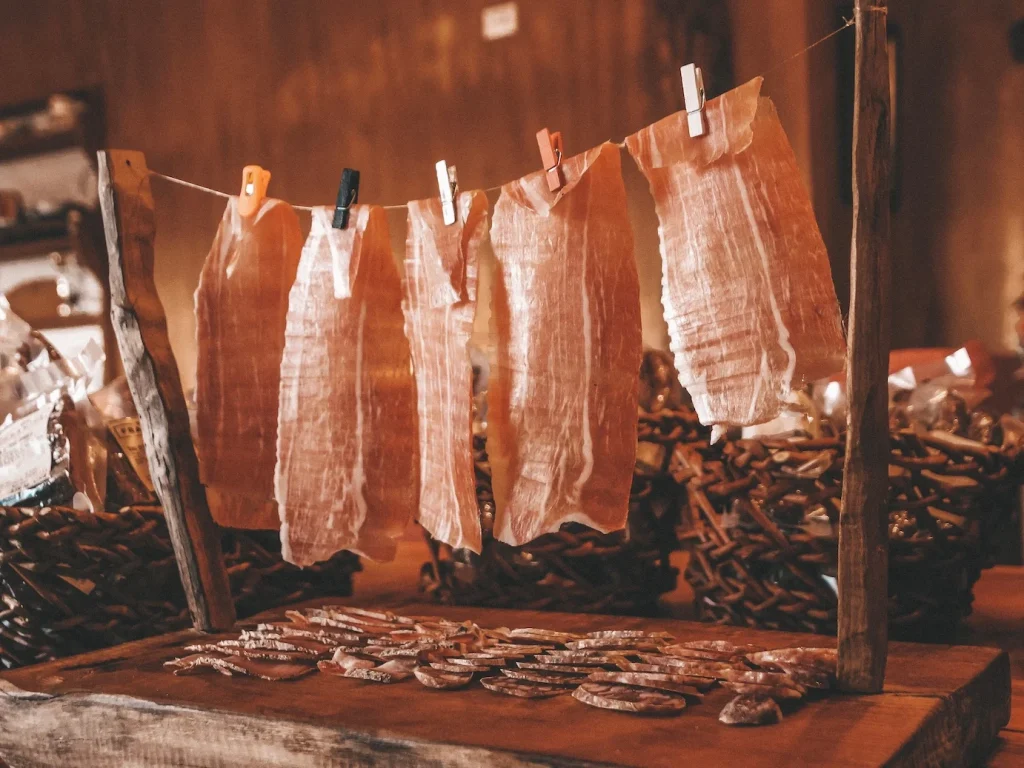Enter the world of olive oil tasting and discover the secrets and delights of the liquid gold of Istria. If you’re curious about the nuances of extra virgin olive oil and eager to explore the olive oil culture of this enchanting region, you’ve come to the right place. We’ll answer the most frequently asked questions about olive oil tasting, introduce you to the fascinating world of Istria’s olive oil production, and give you insider tips to make the tasting experience even better. Get ready to indulge your senses and discover the extraordinary flavors of Istria’s finest olive oils.
- What is extra virgin olive oil?
- How does an olive oil tasting work?
- How do I differentiate between good and bad olive oil?
- What are Istrian olive oil varieties?
- Where can I go olive oil tasting Istria?
- Since when is Istria producing olive oil?
- How does the olive harvest work?
- What are the olive oil regions in Croatia?
- Are there different types of olive oil tasting?
- How is extra virgin olive oil made?
1. What is extra virgin olive oil?
Extra Virgin Olive Oil is the highest quality and most sought after form of olive oil. It is known for its exceptional flavor, aroma and health benefits. But what is it that makes extra virgin olive oil so special?
For starters, extra virgin olive oil is made exclusively from the fruit of the olive tree, known as olives. It is produced using a gentle process that involves mechanical extraction without using excessive heat or chemicals. This gentle extraction method preserves the natural qualities of the olives and results in a superior and pure oil.
Low acidity, usually less than 0.8%, is one of the defining characteristics of extra virgin olive oil. This acidity level is a crucial parameter that is a determinant of the quality and authenticity of the oil. Extra virgin olive oil is subjected to rigorous testing and must meet strict standards in order to earn its designation.
Depending on factors such as olive variety, climate, soil conditions and harvesting techniques, the flavor profile of extra virgin olive oil can vary. It often has fruity notes, ranging from mild and buttery to robust and peppery. The aroma is typically fresh and vibrant, with hints of herbs and ripe fruit.
Extra virgin olive oil is celebrated for its many health benefits in addition to its exceptional taste. It is rich in monounsaturated fats, which are considered to be good for the heart and can be helpful in the reduction of bad cholesterol levels. It is also full of antioxidants and anti-inflammatory compounds that can have a positive effect on overall well-being.
Extra virgin olive oil adds depth and flavor to a wide variety of dishes, whether drizzled over salads, used for cooking, or enjoyed as a dipping oil. Its versatility, combined with its remarkable qualities, make it a staple of Mediterranean cuisine. It is a prized ingredient around the world.
In conclusion, extra virgin olive oil is a premium oil that is obtained through a meticulous process. It offers exceptional taste, health benefits and culinary versatility. Its purity, low acidity and distinctive taste make it an absolute jewel of an oil, enhancing dishes and enhancing the overall dining experience.
2. How does an olive oil tasting work?
Olive oil tasting is a revealing experience which allows you to explore the tastes, fragrances and nuances of different olive oils. It is a sensory journey that engages your senses and deepens your appreciation for this liquid gold, much like a wine tasting.
Selecting a variety of high quality extra virgin olive oils is the first step in an olive oil tasting. Each oil should be poured into a small tasting cup or glass. This allows you to focus on its unique characteristics.
When it comes to tasting, there are specific steps to follow. First, warm the oil with your hands. Gently swirl the oil to release its aromas and take a moment to inhale deeply to capture the scent.
Next, it’s time to taste. Take a small sip of the oil. Breathe a little air through your mouth and allow the oil to coat your palate. Pay attention to the flavors that emerge – notes of fruitiness, bitterness, and pungency. Evaluate the balance and intensity of the oil. Observe any lingering sensations or aftertastes.
To fully appreciate the oil, consider its texture or mouthfeel. Is it smooth and velvety to the touch or does it have a more robust and peppery bite to it? This tactile aspect adds another layer of complexity to the tasting experience.
While tasting, it’s important to cleanse your palate between tasting. A piece of bread or a slice of apple can help neutralize the flavors. This will prepare your senses for the next tasting.
An olive oil tasting is not only informative, but also enjoyable. It is an opportunity to discover your own personal preferences, to deepen your knowledge of olive oil and to develop a discerning palate for high quality olive oils. So don’t miss the opportunity to attend an olive oil tasting when you are in Istria, Croatia. Embark on a tasteful journey through the world of olive oil.
3. How do I differentiate between good and bad olive oil?
In order to ensure that you are getting a quality product with exceptional flavor and health benefits, it is important to differentiate between good and bad olive oil. Here are some of the most important factors to have in mind when evaluating olive oil:
Taste and aroma: A good olive oil should have a fresh, fruity aroma with a hint of grass, herbs, or even fresh tomatoes on the nose. On the palate, it should have a balanced taste profile, including elements of bitterness, spiciness, and fruitiness. Poor quality oils may have an off-flavor, a rancid or musty odor, or a greasy feel in the mouth.
Quality certifications: Look for certifications such as “extra virgin” and “certified organic” on the bottle. These labels are an indication that the oil has met certain standards and has undergone rigorous testing to ensure its quality and authenticity.
Origin and harvest date: Check the label for information about the origin of the olives and the harvest date. Look for oils with a recent harvest date, as freshly harvested olives tend to produce higher quality oil.
Packaging: To protect it from light and heat, which can degrade its quality, quality olive oil is usually packaged in dark glass bottles or metal containers. Avoid oils packaged in clear or plastic bottles as they are more likely to oxidize.
Acidity level: Good olive oil should have a low acidity level, typically less than 0.8 percent. Higher acidity levels may be a sign of poor quality or improper processing.
Price: While price alone is not an indicator of quality, inexpensive oils are often mass-produced and may lack the complexity and flavor of higher-quality options. For a premium olive oil, be willing to invest a little more.
You can become more adept at distinguishing between good and bad olive oils by paying attention to these factors and developing your palate through tasting. To make sure you’re buying a top-quality product that will enhance your culinary creations, don’t hesitate to seek advice from experts or reputable producers.
4. What are Istrian olive oil varieties?
Istria, the green peninsula of Croatia, is known for its exceptional olive oil production. The region is home to a wide variety of olive oil cultivars that contribute to the rich and diverse flavor profiles of its oils. Here are some notable Istrian olive oil varieties:
Istarska Bjelica: This is one of the most common and traditional olive varieties in Istria. It produces a well-balanced oil with a medium fruity taste. It has a hint of almond and a slightly spicy finish.
Leccino: Originally from Italy, Leccino has found its place in Istrian olive groves. It is characterized by subtle herbaceous and grassy notes and produces a smooth and delicate oil with a mild fruity taste.
Pendolino: Known for its high oil content, Pendolino is another Italian variety that thrives in Istria. With hints of artichoke and a mild peppery finish, the resulting oil has a smooth and harmonious flavor profile.
Buža: Highly prized for its unique flavor, this is a traditional Istrian variety. The oil produced from Buža olives is intense and robust, with a pronounced bitterness and pungency, as well as complex notes of fruit and herbs.
Rosignola: Known for its early ripening, the Rosignola olive is harvested in the early stages of ripening to produce an oil that is delicate and mild. It offers a fruity flavor with subtle herbal undertones and a smooth peppery finish.
These are just a few of the varieties of olive oil that can be found in Istria, each of which brings its own unique characteristics to the table. It is a delightful experience for any gourmet or olive oil connoisseur to explore the diverse flavors of Istrian extra virgin olive oils.
5. Where can I go olive oil tasting in Istria?
When it comes to tasting olive oil in Istria, there are several exceptional places where you can enjoy tasting this liquid gold. Here are a few of the renowned olive oil producers that offer olive oil tasting experiences in the region:
Ipsa: A family-owned olive oil producer with a long tradition, Ipsa is located in the heart of Istria. Visitors can sample their award-winning olive oils and learn about the production process in a warm and welcoming atmosphere in their tasting room and terrace.
Ursaria: Located in the beautiful nature park surrounding Lim Bay, Ursaria is a boutique olive oil producer that prides itself on organic and sustainable farming practices. Their tastings, along with expert guidance from their knowledgeable staff, offer the opportunity to explore the distinct flavor profiles of their premium olive oils.
Brist: Brist is an olive oil estate that offers an immersive olive oil tasting experience, nestled in the stunning Istrian countryside around Vodnjan. Visitors can stroll through their olive groves, learn about the techniques used in harvesting the olives, and taste the unique flavors of their extra virgin olive oils.
Stancija Spin: This picturesque estate, which belongs to one of the largest olive oil producers in Istria, is also known for its production of high quality extra virgin olive oil. While enjoying breathtaking views of the surrounding countryside, guests can taste a variety of olive oils, from delicate to robust.
Meneghetti: Located near Bale, Meneghetti is a luxurious estate that combines olive oil producing with fine dining and wine. Visitors can take part in guided tastings of their premium olive oils, accompanied by expertly paired culinary delicacies, creating a truly pampering experience.
These are just a few examples of the many esteemed places in Istria where you can embark on a journey of olive oil tasting. Each offers a unique ambience and opportunity to appreciate the distinctive flavors of Istrian olive oils. You can book your olive oil tasting here. Whether you’re a novice or a connoisseur, exploring the world of olive oil tasting in Istria is a treat for the senses.
6. Since when is Istria producing olive oil?
Istria has a rich history of producing olive oil that goes back thousands of years. Istria is an ideal place for growing olive trees and producing high quality olive oil due to its ideal climate and fertile soil. The origins of olive oil production in Istria can be traced back to ancient times, with evidence of growing and extracting olive oil found in archaeological sites.
The Romans had a significant impact on the development of olive oil production in Istria. They were aware of the potential of the region and introduced improved cultivation methods and advanced oil extraction techniques. Olive oil, not only for culinary purposes, but also for medicinal, cosmetic and religious uses, became an essential commodity during this period.
Olive oil production in Istria has flourished throughout the centuries. Knowledge and expertise have been passed down from generation to generation. Traditional methods have been preserved, while modern techniques have been incorporated to improve quality and efficiency.
Today, Istria is well known for its exceptional olive oils, which are recognized both locally and internationally for their superior taste and quality. Continuing the legacy of olive oil production, the region boasts numerous olive groves and oil mills. Some of the finest olive oils in the world are produced through the dedication of local farmers and producers, combined with the region’s favorable climate and soil conditions.
A testament to the region’s cultural heritage and deep connection to the land, the long tradition of olive oil production in Istria is a source of pride for the region. It is a symbol of Istria’s commitment to excellence in agriculture and a source of pride for the local community.
7. How does the olive harvest work?
The olive harvest is an important milestone in the production of high quality olive oil and is a crucial and labor-intensive process. In Istria, Croatia, olive harvesting is usually done in late autumn, usually from October to December, when the olive is at its peak maturity.
Traditionally, the olives were harvested by hand. Using wooden ladders and small rakes or combs, the ripe fruit was gently removed from the branches. This method, which ensures careful handling of the olives to preserve their quality, is still used in many small and family-run olive groves.
In recent years, especially in larger olive groves, the use of mechanical harvesting methods has become more widespread. Mechanical harvesting equipment is used for shaking the olives from the tree. The fallen olives are then collected using nets placed under the trees. Alternatively, they can be collected directly in containers attached to the harvesters.
Once the olives are harvested, they are transported to the olive mill for processing. At the mill, the olives are carefully cleaned to remove leaves and debris and then undergo the pressing or extraction process to obtain the precious oil. Extraction methods vary, but generally involve crushing the olives to release the oil. The oil is then separated from the solids and water.
Olive harvesting is not only a time of hard work and dedication, but also a time to celebrate and share. It brings together family members, friends, and neighbors who come together to lend a helping hand and take part in the age-old tradition of the olive harvest. Harvesting is not only about reaping the fruits of labor, but also about preserving the rich cultural heritage and ensuring that the time-honored tradition of producing olive oil in Istria continues.
8. What are the olive oil regions in Croatia?
Croatia is a country of different olive oil regions. Each of them has its own unique characteristics and tastes. Among these regions, Istria stands out as one of the prominent areas known for producing high quality olive oil.
With its Mediterranean climate and ideal conditions for olive growing, Istria is located in the northwest of Croatia. The region is characterized by rolling hills, fertile soil and a combination of warm sunshine and gentle sea breezes. These factors contribute to the unique taste and smell of Istrian olive oils.
The Dalmatian coast, which includes areas such as the island of Brač, Šolta and the Pelješac peninsula, is another notable olive oil region in Croatia. Dalmatia benefits from a similar Mediterranean climate, with hot summers and mild winters. This provides optimal conditions for the cultivation of olive trees. Olive oils from this region are often described as robust and full-bodied, with distinctive fruitiness.
The island of Korčula, located in the Adriatic sea, is also renowned for its olive oil production. The island’s unique microclimate contributes to the exceptional quality of the olive oils produced here, with a combination of abundant sunshine, sea influence and rocky terrain.
Each of Croatia’s olive oil regions has unique terroir, olive varieties and production methods, resulting in a wide range of flavors. The exploration of Croatia’s olive oil regions is a delightful journey for connoisseurs, allowing them to experience the diverse expressions of this liquid gold.
9. Are there different types of olive oil tasting?
When it comes to tasting olive oil, there are indeed several ways to experience it, depending on one’s preferences and interests. One can choose to focus solely on olive oil tasting. Or one can opt for a combination of olive oil and wine tasting, which offers a delightful exploration of two iconic Istrian products.
In Istria, which is renowned for its exceptional production of both olive oil and wine, visitors have the opportunity to participate in both dedicated olive oil tastings and combined tastings that showcase the synergy between these two culinary treasures. Dedicated tastings offer guests the opportunity to explore the complexity of different types of oil, learn about the production process, and discover the nuances of taste and aroma.
Olive oil and wine pairings offer a harmonious sensory journey for those seeking a more complete tasting experience. These tastings offer the opportunity to explore flavor interactions and understand how specific oils complement wines. Expert guides and sommeliers share their knowledge and insight into the intricate world of flavor pairings as they guide participants through a selection of olive oils and wines.
Whether one chooses to participate in a focused olive oil tasting or a combined wine and olive oil tasting, both options provide an enriching experience that showcases the culinary excellence of Istria. They offer a deeper understanding and appreciation of the region’s agricultural heritage, commitment to quality production and the delightful combination of olive oil and wine, creating an unforgettable gastronomic adventure. Book your olive oil tasting here.
10. How is extra virgin olive oil made?
Once the olives have been harvested, they are subjected to a meticulous process in order to transform them into extra virgin olive oil. The harvested olives are carefully cleaned to remove any impurities such as leaves and twigs. Then, using traditional stone mills or modern mechanical methods, they are crushed into a paste.
The olive paste is malaxed. This is done by gently stirring the paste to encourage the oil droplets to come together. This makes it easier for the oil to separate from the solids. The next step is to extract the oil from the paste. There are two main methods: centrifugation and pressing.
Centrifugation is the most commonly used method today. The olive paste is spun in a centrifuge. Due to the difference in density, the heavier solids and water are separated from the oil. This process is a more efficient separation of the oil and a contribution to the preservation of its quality.
Pressing is a traditional method where the olive paste is pressed using hydraulic presses to extract the oil. Compared to centrifugation, this method takes more time and can produce slightly higher acidity levels.
The oil is then carefully filtered to remove any remaining impurities once it has been separated from the solids. This is a step that helps to improve the clarity and purity of the oil.
Finally, once the extra virgin olive oil has been extracted, it is stored in stainless steel tanks or bottles under controlled conditions in order to preserve its quality. To maintain its freshness and prevent oxidation, it is essential to protect the oil from light, heat and oxygen.
This meticulous process ensures that only the highest quality extra virgin olive oil is produced and that it retains all of its rich flavors, aromas and nutritional properties. It is this dedication to quality and attention to detail that has made extra virgin olive oil one of the most prized and appreciated ingredients in the culinary world.
A Taste of Olive Elixir
From understanding the qualities of extra virgin olive oil to unraveling the secrets of different tasting techniques, we hope this guide has provided valuable insights and answered your burning questions. Let your taste buds explore the nuances of this liquid gold during your visit to Istria, whether you choose to indulge in a pure olive oil tasting or opt for a delightful combination with wine. Enjoy olive oil and discover its remarkable flavors! If you have any further questions, you can get in touch with us here.





